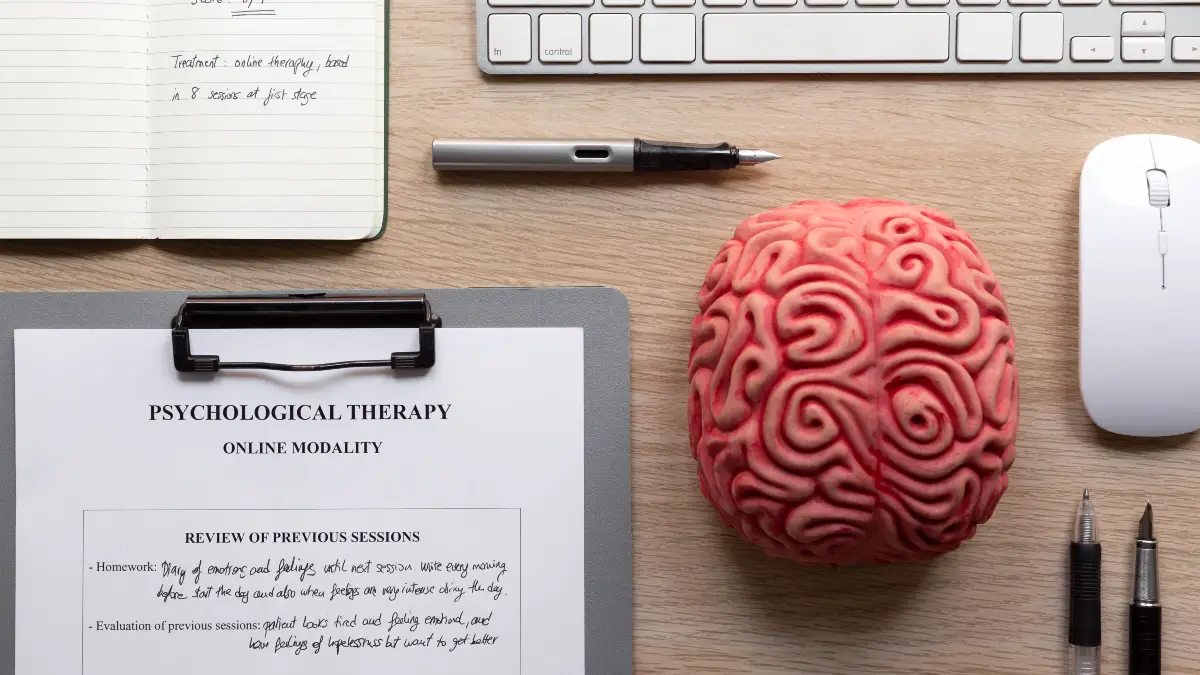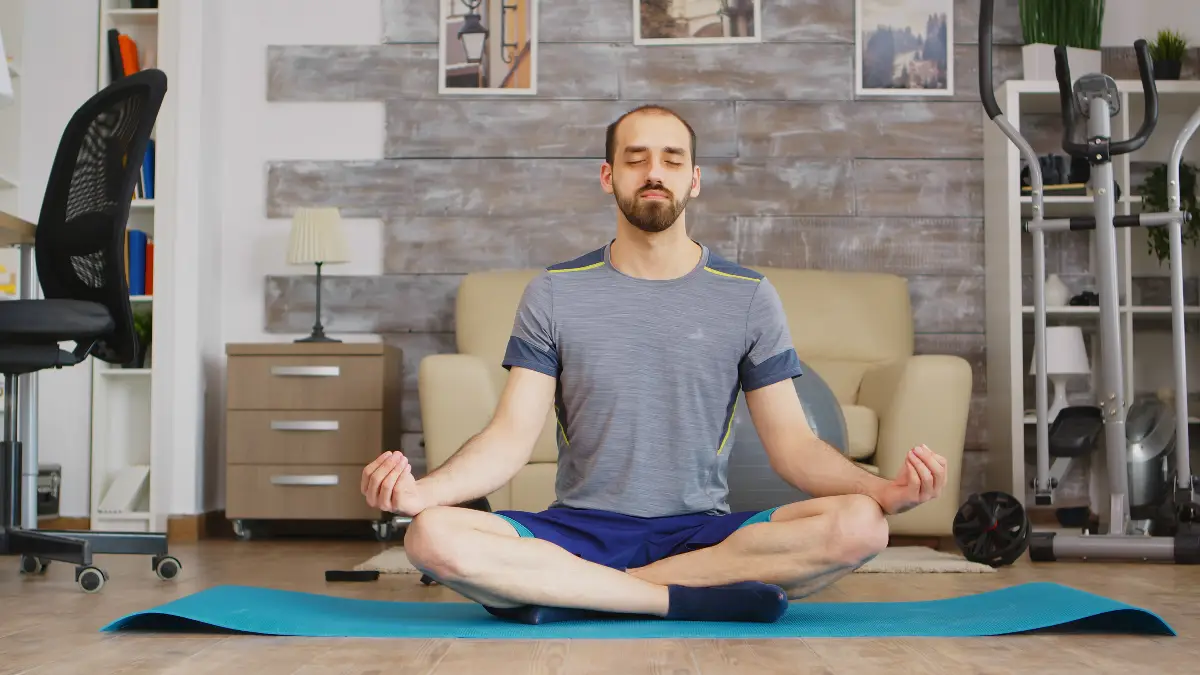The project manager staring at a single email for ten minutes isn’t lazy—their brain has just crashed. The words blur, focus is impossible, and the feeling of being perpetually “on” but profoundly unproductive has become the new normal.
This is cognitive overload, a state of mental exhaustion where your mind, saturated with information, simply refuses to cooperate. It’s not a personal failing; it’s a pandemic. Workplace reports show burnout is now the standard, with 82% of employees at risk. For years, the answer was meditation.
But for a mind already in overdrive, trying to sit still can feel like adding fuel to the fire. There’s a smarter way that works with your body, not against your racing thoughts.
This 11-minute “Brain Reset” uses simple, active exercises to calm your nervous system directly, clearing the fog from the bottom up.
Your Step-by-Step Guide to the 11-Minute Brain Reset

This routine isn’t a random set of stretches. It’s a carefully designed sequence of exercises for your body and brain. Each step is made to calm down your stress response, turn on your relaxation response, and clear out the mental junk that causes brain fog.
It works because it’s active. It gives your restless mind and body something to do, which makes it much easier to get into than trying to sit perfectly still.
What to Do, Minute by Minute
These five steps take about 11 minutes. All you need is a chair and a little bit of space.
Step 1 (2 Minutes): Calm Your Nerves with Eye Movements
How to do it:
Sit in a chair and keep your head perfectly still. Look as far as you can to the left without moving your head. Hold it for five seconds. Then, look as far as you can to the right and hold for five seconds. Keep repeating this for about two minutes.
Why it works:
This simple exercise has a powerful effect on your brain. The slow, side-to-side eye movements help reset your autonomic nervous system—the system that controls your stress and relaxation.
It sends a signal to your brain that you’re safe, which helps break the pattern of brain fog. Neuroscientist Dr. Andrew Huberman says that focusing on something outside of yourself is a great way to change how you feel on the inside.
Step 2 (2 Minutes): Press Your Body’s “Calm Down” Button with a Self-Hug
How to do it:
Cross your arms over your chest and give yourself a hug, with your hands on your shoulders. From there, slowly tilt your head to one side, like you’re trying to touch your ear to your shoulder.
Hold for a few seconds. Go back to the middle and tilt to the other side. Keep doing this for two minutes.
Why it works:
This move combines a comforting hug with a gentle neck stretch that activates your vagus nerve.
The vagus nerve is like the main highway for your body’s relaxation system. When you activate it, you’re basically pressing a “calm down” button. It tells your brain to slow your heart rate, release tension, and feel more grounded.
Step 3 (2 Minutes): Sharpen Your Focus with the Thumb-Switching Gaze
How to do it:
Hold both hands out in front of you with your thumbs up, about a foot apart. Keep your head still and focus on your left thumb. Then, switch your focus to your right thumb. Keep switching back and forth for two minutes.
Why it works:
Brain fog makes your thinking feel slow and fuzzy. This exercise is like a workout for your brain’s focus circuits. It strengthens the connection between your eyes and the parts of your brain that control attention.
It helps your brain get sharp again. Focusing your vision like this also increases a chemical called acetylcholine, which is key for alertness.
Step 4 (2 Minutes): Get Your Brain in Sync by Drawing an Infinity Sign
How to do it:
Hold one arm straight out. Start drawing a big, sideways figure-eight ($$\infty$$) in the air. Follow your hand with your eyes. After about 40 seconds, draw the shape with just your elbow. For the last 40 seconds, draw it with just your index finger.
Why it works:
This movement crosses the middle of your body, which forces the left and right sides of your brain to work together. This helps you get out of rigid, stuck thinking and allows for clearer, more creative thoughts.
Step 5 (3 Minutes): Quiet Your Brain’s Alarm System with Box Breathing
How to do it:
This is a simple breathing pattern. Breathe in through your nose for a count of five. Hold your breath for five. Breathe out through your mouth for five. Hold your breath for five. Repeat this for three minutes.
Why it works:
How you breathe has a direct impact on how you feel. The steady rhythm of box breathing is very calming for your nervous system. It quiets down the amygdala, which is your brain’s alarm center.
At the same time, it strengthens your prefrontal cortex, the part of your brain that helps you stay in control. This lowers stress hormones and gets more oxygen to your brain, which helps clear out the fog.
| Step # | Exercise Name | Duration (Approx.) | Instructions (Concise) | What It Does for Your Brain |
| 1 | Eye Movements | 2 mins | Head still, look left and right, holding each side for 5 seconds. | Resets your stress-control system. |
| 2 | Self-Hug & Neck Tilts | 2 mins | Hug yourself and gently tilt your head from side to side. | Hits the “calm down” button (Vagus Nerve). |
| 3 | Thumb-Switching Gaze | 2 mins | Head still, look back and forth between your two thumbs. | Sharpens your brain’s focus circuits. |
| 4 | Airdrawing Infinity Sign | 2 mins | Draw a sideways figure-eight with your arm, elbow, then finger. | Helps both sides of your brain work together. |
| 5 | Box Breathing | 3 mins | Inhale (5s), Hold (5s), Exhale (5s), Hold (5s). | Quiets your brain’s alarm center. |
Why This 11-Minute Break Works So Well

To see why this routine is so effective, we need to look at the science of short breaks and how the brain can change. This isn’t just about taking a rest from work. It’s an active process to improve how your brain works, both right now and in the long run.
The Big Power of a Small Pause
The idea of a “micro-break”—a short pause of 30 seconds to five minutes—goes against the “hustle culture” idea that you have to work all the time to be productive.
Your brain isn’t made to focus on one thing for hours. After a while, it starts to treat your work like background noise, and your performance drops. Research from the University of Illinois found that short breaks stop this from happening, keeping you focused and engaged.
Think of your brain like a phone with too many apps open. It gets slow and the battery drains fast. A micro-break is like closing those extra apps to make your phone run faster. The results are real.
A 2022 study found that micro-breaks make you feel more energized, less tired, and can boost focus by up to 40%. Even a two-minute break with some movement can give you a noticeable boost. This 11-minute reset is like a supercharged version of that idea.
Rewire Your Brain in Minutes, Not Months
The biggest benefit of this routine is that it does more than just give you a quick break. It helps your brain change and adapt, a process called neuroplasticity.20 We used to think this only happened in kids, but we now know adult brains can change, too.
Work from Stanford neuroscientist Dr. Andrew Huberman shows that even a single 17-minute session of paying close attention to your body can permanently rewire your brain’s focus circuits. The 11-minute reset uses a similar idea but is more active and condensed.
This fits with a lot of research on meditation. Regular practice can lead to real changes in the brain, like more gray matter in the prefrontal cortex (the part for planning and decision-making).
It can also make the amygdala (the stress center) less reactive. This 11-minute reset helps kickstart that process, creating lasting changes in how you handle stress.
The routine gets your brain ready to learn and change. To build new connections, your brain needs focused attention, which is powered by chemicals like acetylcholine.
But when you’re burned out, those chemicals are low and your brain is full of “noise.” This routine helps in two ways. First, the physical exercises and breathing calm your nervous system and lower stress hormones, which gets rid of the noise.
Second, the focus exercises, like the thumb-switching gaze, boost the chemicals you need for attention. By clearing the noise and boosting the focus signal, the routine makes your brain ready to change.
How Moving Your Body Changes Your Mind
The main idea behind the Brain Reset is that brain fog isn’t just in your head—it’s in your body. So, the fastest way to change your mind is to change your body first.
- The “Calm Down” Button: As you saw in the self-hug exercise, activating the vagus nerve is a direct way to get your body out of stress mode. It lowers your heart rate, blood pressure, and the stress hormone cortisol.
- Getting Your Brain in Sync: The infinity sign exercise makes the two sides of your brain communicate better. This can help you think more clearly and solve problems more easily.
- The Breath-Brain Connection: The box breathing exercise uses the link between your breath and your brain. Slow, controlled breathing sends a strong signal to your brain to calm down. This is a key part of many relaxation techniques because it works so well.
Is This Really Better Than Meditation?

Saying this routine is “replacing” meditation is a bold claim. It’s more helpful to think of it as a different tool for a different job. It’s made for the specific problems of a busy, stressed-out professional.
Doing Something vs. Watching Something
Dr. Andrew Huberman talks about a range of focus, from paying attention to the outside world to paying attention to your own body.
Traditional meditation is about passively watching what’s happening inside you. You’re told to “notice your breath” or “watch your thoughts” without trying to change anything.
The 11-Minute Brain Reset is about actively doing something to change how you feel. You use physical actions—like eye movements and breathing patterns—to quickly shift your state.9 This is a key difference.
A Tool for People Who Like to Get Things Done
If you’re a high-achiever, your brain is wired for action and problem-solving. For a mind like that, the idea of “doing nothing” in meditation can feel wrong and even stressful.
The Brain Reset is designed for you. It gives you a clear set of tasks with a clear goal: change how you feel. This makes it feel more productive and less frustrating. It gives your action-oriented mind something to do, so it can help you calm down instead of spinning in circles.
They Work Together, Not Against Each Other
So, should you quit meditation? Not at all. The best approach is to know when to use each tool. The 11-Minute Reset is not a replacement for meditation, but a partner to it.
Here’s a good way to think about it. Meditation is like cleaning up and organizing the files on your computer for long-term health. The 11-Minute Brain Reset is like hitting “Ctrl-Alt-Delete” when your computer freezes.
For many people, the Brain Reset is the perfect first step. You can use it to calm your nervous system before you meditate. This makes it much easier to sit and watch your thoughts without getting frustrated. It’s the on-ramp that gets you onto the highway of meditation.
| Feature | 11-Minute Brain Reset | Traditional Meditation |
| What You Do | Active: You do specific things to change how you feel. | Passive: You watch your thoughts and feelings without judgment. |
| Main Goal | Body First: Uses movement and breath to calm your nervous system. | Mind First: Focuses on your thoughts and awareness. |
| Time | Quick (11 minutes): Easy to fit into a busy day. | Flexible (5-60+ minutes): Often works better with longer sessions. |
| Biggest Challenge | You need a little space to move around. | Can be hard if your mind is racing or you like to be active. |
| Best For | A quick fix for brain fog, focusing before a meeting, or an afternoon slump. | Building long-term stress resistance, self-awareness, and emotional control. |
| The Result | A fast reset for your mind and body. | A gradual change in your baseline mood and how you react to stress. |


